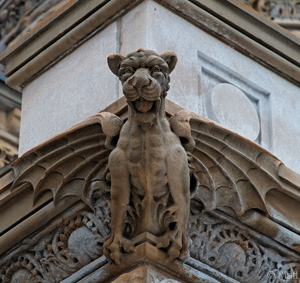Shinto or "Kami-no-michi" which means the way of the gods is a religion in Japan that focuses on the relationship and harmony of human beings and the earth. They value the importance of nature. Shinto does not have official holy books, a founder, teachers or saints. It is based on mythology which can be found in Kojiki, the Records of Ancient Matters and the Chronicles of Japan; these were written in the 8th Century, even though the myths were orally passed down until the 5th century.

Shinto had Amaterasu the sun goddess,Egypt's Ra came to mind. I researched a bit on her because I thought it was interesting that she was infact a goddess. Amaterasu was born from Izanagi's (I guess he just came back from the underworld looking for his sister) left eyeball, along with other heavenly people who were born from his body parts. She had symbols of a necklace of light, the milky way and her jeweled clothes. She introduced weaving clothes from silk to the humans. I also found out that she had a trouble some rival named Susano. He did horrible things like covering her temples floors with dung, killing horses, and servants. I guess this caused her to want to hide in a cave which she did not leave until a gods party intrigued her and also her own reflection and when she emerged from the cave, pushing a boulder away, supposedly the first dawns light happened. Susano got punished; having his nails and beard trimmed and sent to earth. (if you want to read the full detailed myth I have a link at the end of this blog)

This depicts the sun godess emerging, very cartoon like style here.
Kami is the word for gods and they were believed to purify the land. The Japanese have shrines to honor their gods. They are built on moutains and uneven land. Their are pilgrimages to these shrines, this is like many of the cultures we have been studying like Egypt giving offering to animal-god temples,and also with having temples where to pray is like both India, and china. Buddism influenced things. Shinto shrines originally were simple in design and left unpainted but then with Buddism became popular the shrines were then painted with bright colors. Also the images of the gods changed they were just symbols but later made into human images.
(brightly painted in comparison to the image of Ihrine Ise Bay Shrine)
One of the oldest and most important shrine is the Ihrine Ise Bay shrine. Legends has it that the shrine has correlation to Amatersau's mirror which she gave to the first emperor, Jimmu (supposedly descented from gods) In the image of this shrine you can see the difference of the buddist influenced and with the original design. Also it seems more in harmony with nature and the Shinto way because of the green growth on the roof.
Izumo Taisha Jinja is another shrine. Kamis are said to gather to the shrines every October, so I guess they are there right now!
Also I found a cool image of kitsune guardians that can be found in shrines.(once more I think of Egypt and china because of the usage of animal icons as protectors with importance) At the museum in the China room they had akita like dog statues which protected the tomb.
So many Videos!!!!!!!!
an example of a Lantern Festival in the shrines This video is short and gives insight of celebrations of the shrines.
fox statues in shrine it just shows a shrine with the fox statues similar to the image above
Kami talks of the gods
Creation Myth story story of Izanami and Izanagi
Amaterasu visual art story of the sun goddess
Department of Asian Art. "Shinto". In
Heilbrunn Timeline of Art
History. New York: The Metropolitan Museum of Art, 2000–.
http://www.metmuseum.org/toah/hd/shin/hd_shin.htm (October 2002) Web. 10. 2012.
"Shinto." The Columbia Encyclopedia. New York: Columbia University Press, 2008. Credo Reference. Web. 10 October 2012.
"Shinto." The Hutchinson Unabridged Encyclopedia with Atlas and Weather guide. Abington: Helicon, 2010. Credo Reference. Web. 10 October 2012.
If you want to read the whole story of Amaterasu
http://www.credoreference.com/entry/bloommyth/amaterasu



















































